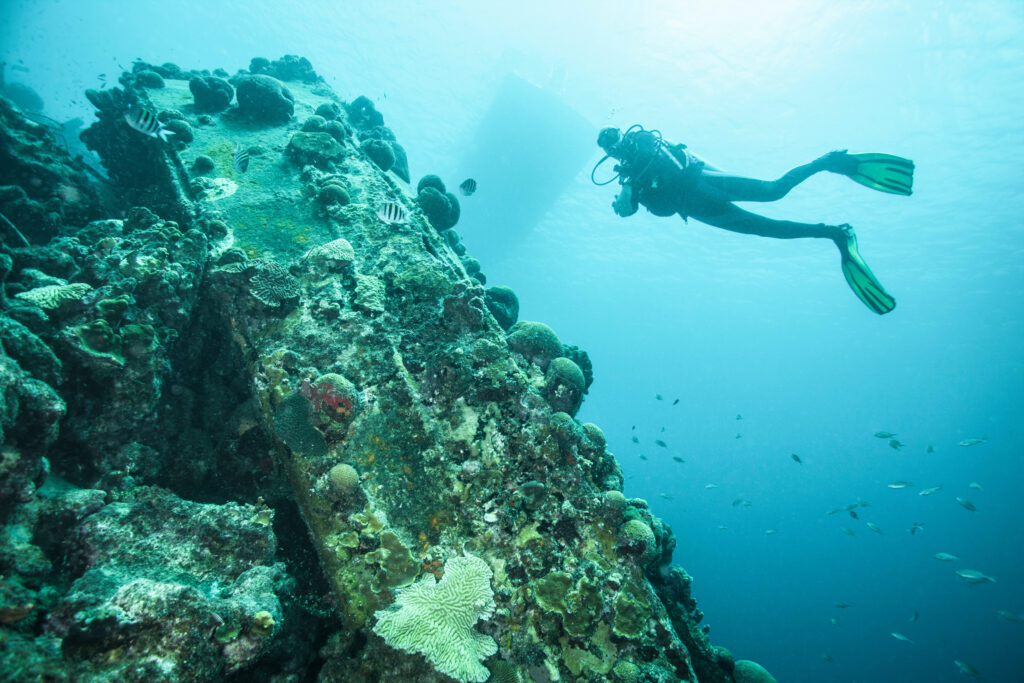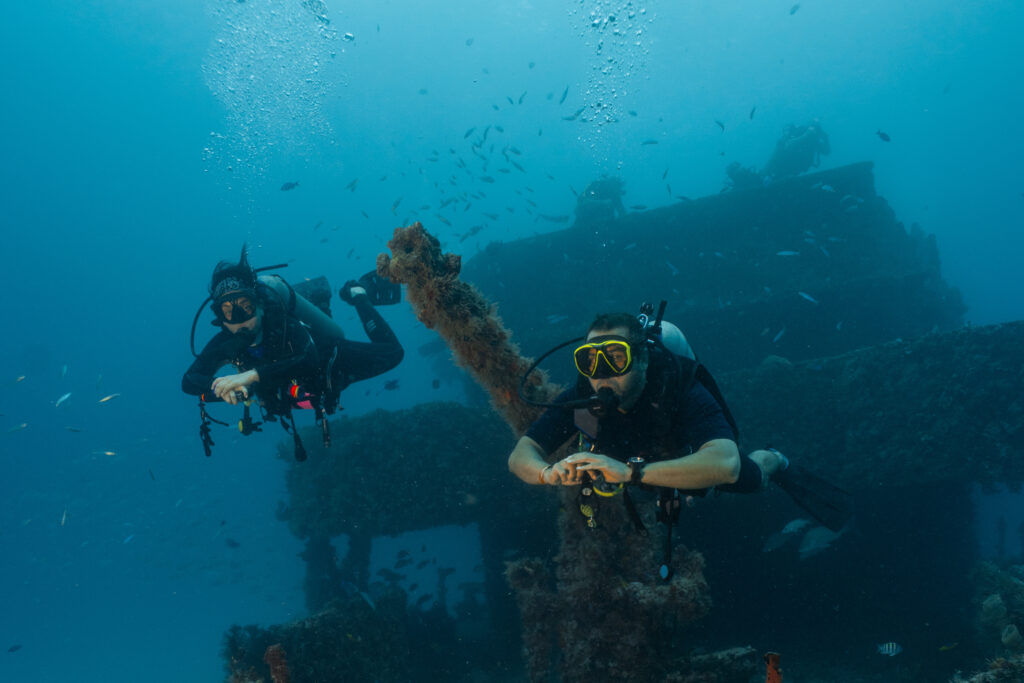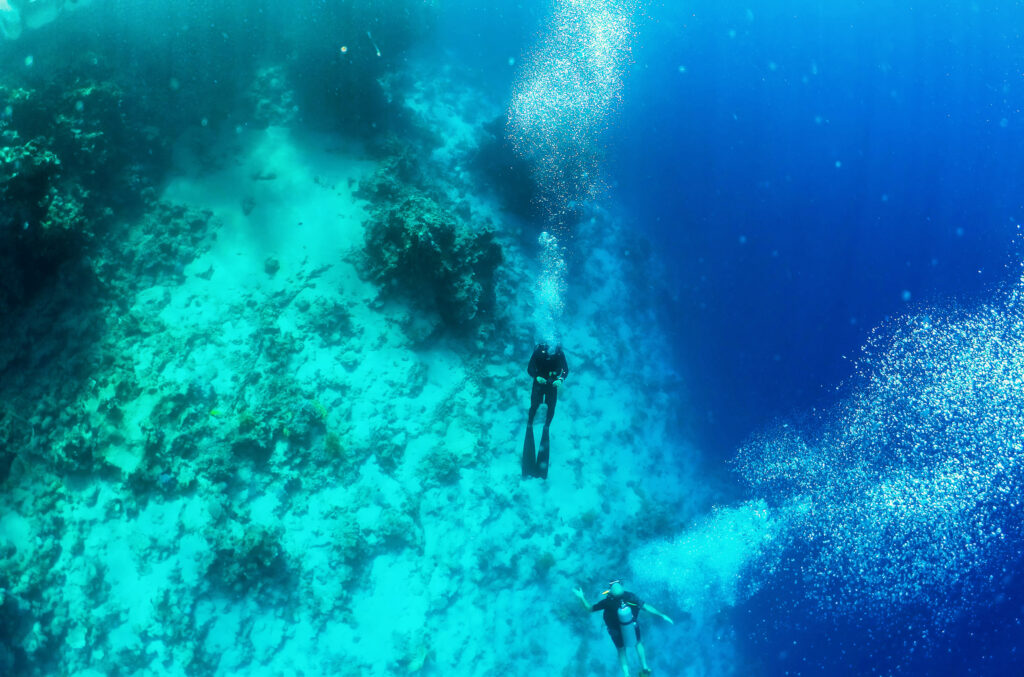What is a Air Compressor?

What is a Air Compressor? Diving beneath the ocean’s surface and exploring its hidden marvels is an exhilarating experience, the wonderment of which is enabled by the technologically advanced gear that divers wear. Among the critical components that ensure the safety and capability of these aquatic explorers is the air compressor—a fascinating piece of equipment […]
What is Absolute Pressure in Scuba Diving Context?

Absolute pressure, a term frequently used in the field of scuba diving, refers to the total static pressure at a particular point. It is a vital concept that divers need to understand and appreciate to ensure safety during their underwater adventures. In technical terms, absolute pressure is the sum of the atmospheric pressure and the pressure due to any fluid column above the point of measurement. It is always measured relative to a perfect vacuum, which is devoid of all matter and hence bears a pressure of zero.
What is Hypoxia when Scuba Diving?

Hypoxia, defined as a deficiency of oxygen in the body, is a significant concern for scuba divers, as it can impair vital bodily functions, reduce consciousness, and lead to life-threatening conditions. This medical issue becomes especially relevant in the context of scuba diving, where a diver’s environment and the unique breathing conditions can increase the likelihood of insufficient oxygen levels. Hypoxia is not always immediately apparent, but recognizing and understanding its causes, symptoms, and prevention strategies can help divers stay safe underwater.
What is Mixed Gas?

Mixed gas, in the context of scuba diving, refers to breathing gases other than air, which are used to extend bottom time, reduce decompression obligations, and manage the risks associated with deep diving. These mixtures can include combinations of oxygen, nitrogen, helium, and other inert gases, tailored to specific diving conditions and depths. By using mixed gases, divers can safely reach greater depths and explore environments that would otherwise be inaccessible due to the limitations of breathing air alone.
What function does Helium have in Scuba Diving?

Helium, a chemically inert and second lightest element in the universe, plays a significant role in the world of scuba diving, particularly in deep diving. Its unique properties provide divers with a safer breathing gas mixture that reduces the risk of nitrogen narcosis and decompression sickness. This entry explores the history, benefits, and applications of helium in scuba diving.
What is Hydreliox?

What is Hydreliox? Hydreliox is a specialized breathing gas mixture composed of hydrogen, helium, and oxygen. It is primarily used in the field of deep-sea diving to enable divers to reach extreme depths that would otherwise be unmanageable with conventional air or other gas mixtures. Hydreliox has become crucial in extending the operational limits of […]
What is a Deco Mix?

Decompression mix, or deco mix, is a specialized gas mixture used in scuba diving to facilitate safer and more efficient decompression during ascent. Decompression is a critical phase in diving where accumulated inert gases, primarily nitrogen, are safely expelled from a diver’s body to avoid decompression sickness (DCS). Deco mixes are tailored to optimize the elimination of these gases, particularly during deep or prolonged dives where standard air might not suffice. Understanding and correctly using deco mixes can significantly enhance a diver’s safety, reducing the risk of DCS and other diving-related ailments.
What is Heliox?

Heliox is a breathing gas mixture composed of helium and oxygen, widely used in deep-sea diving due to its unique properties that improve safety and performance under extreme conditions. Unlike standard air, which consists of approximately 78% nitrogen and 21% oxygen, Heliox replaces the nitrogen with helium. This substitution is crucial in mitigating the adverse effects of nitrogen narcosis and oxygen toxicity that divers can experience at greater depths. Heliox has been a game-changer for technical and commercial divers, enabling them to work and explore at depths that would otherwise be highly hazardous.
What is Rapture of the Deep?

Rapture of the Deep, commonly known as nitrogen narcosis, is a condition experienced by scuba divers at significant depths. This phenomenon, resulting from the increased partial pressure of nitrogen when diving, can lead to a range of symptoms that affect cognitive and motor functions. Understanding Rapture of the Deep is crucial for divers to ensure safe practices and avoid potentially hazardous situations underwater.
What is Partial Pressure?

Partial pressure is a fundamental concept in physics and chemistry, particularly significant in the context of scuba diving. It refers to the pressure exerted by a single type of gas in a mixture of gases. Understanding partial pressure is crucial for divers as it influences how gases are absorbed, transported, and expelled in the human body under varying underwater conditions. This concept helps in comprehending how different gases behave under increased pressures encountered at depth and is essential for ensuring safety and preventing diving-related illnesses.
